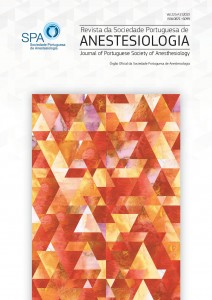Fetal effects and neonatal impact of obstetric anesthesia
DOI:
https://doi.org/10.25751/rspa.3537Keywords:
obstetrical analgesia, obstetrical anesthesia, fetal monitoring, neonatal outcome.Abstract
Fetal safety is a permanent priority during anesthetic practice for obstetrics. This review is intended to analyze the scientific evidence available on the potential fetal and neonatal impact of intrapartum anesthetic procedures.
An online search (PubMed) was conducted. Relevant references were selected and reviewed.
Compared to regional techniques, intravenous analgesia with opioids is associated with higher incidence of fetal bradycardia and decreased fetal heart rate variability, lower Apgar score, greater base deficit and higher incidence of neonatal respiratory depression. These effects are accentuated if there is prior fetal distress and are similar to those induced by general anesthesia for cesarean section. The choice of opioid for intravenous analgesia should be based on the pharmacology of each agent and on the progression of labor. Remifentanil offers good cost-effectiveness and a security profile among intravascular opioids. It is important not to underestimate the potential for secondary injury associated to regional techniques, namely by maternal hypotension and uterine hypertonicity, with resulting uteroplacentar hypoperfusion.
There is no evidence on the ideal regional technique. It should be tailored to maternal and fetal characteristics, considering onset and duration of its analgesic or anesthetic effect as well as its influence on maternal hemodynamic and uterine hypertonicity. Inhalational analgesia with N2O may constitute an alternative to regional techniques.
Downloads
Downloads
How to Cite
Issue
Section
License
Articles are freely available to be read, downloaded and shared from the time of publication.
The RSPA reserves the right to commercialize the article as an integral part of the journal (in the preparation of reprints, for example). The author should accompany the submission letter with a declaration of copyright transfer for commercial purposes.
Articles are published under the terms of the Creative Commons Attribution Non-Commercial License (CC BY-NC).
After publication in RSPA, authors are allowed to make their articles available in repositories of their home institutions, as long as they always mention where they were published.


